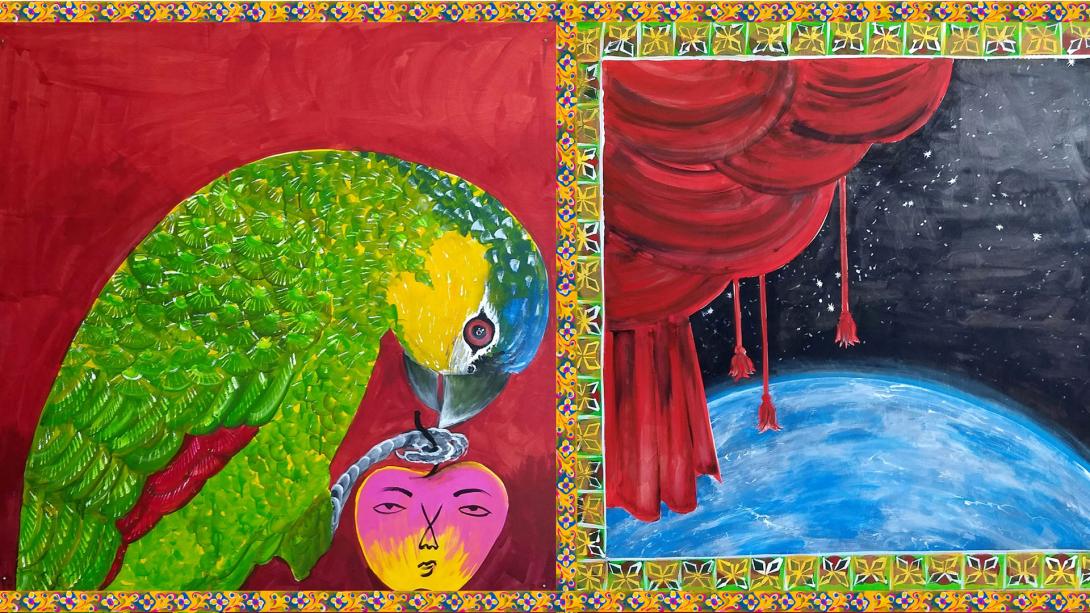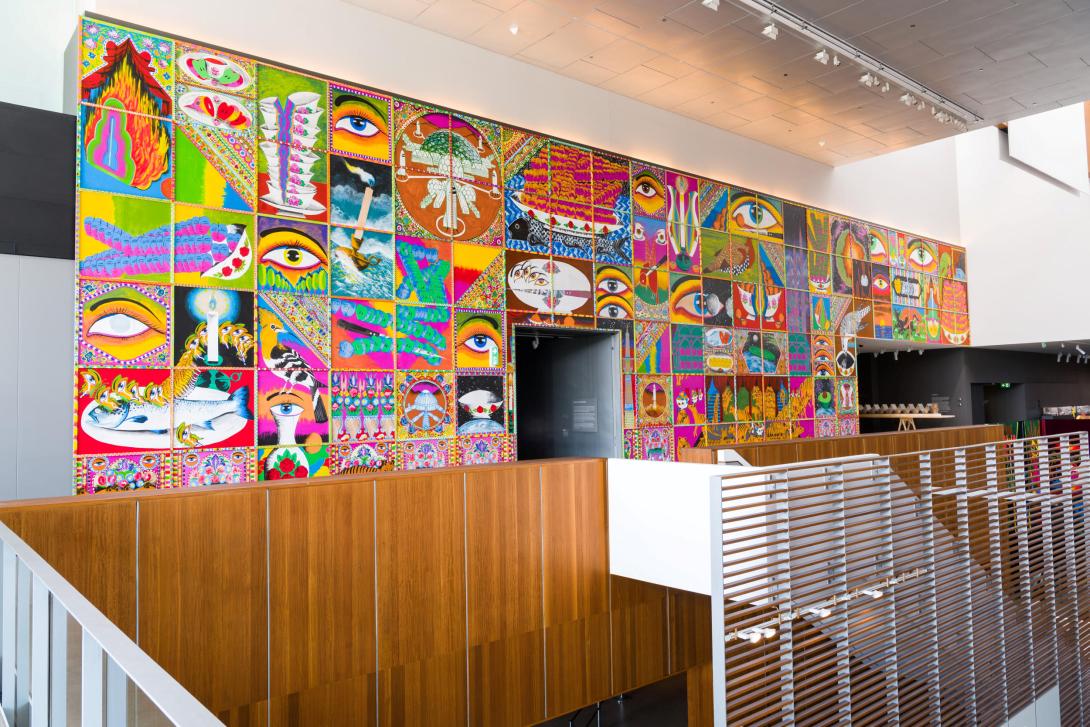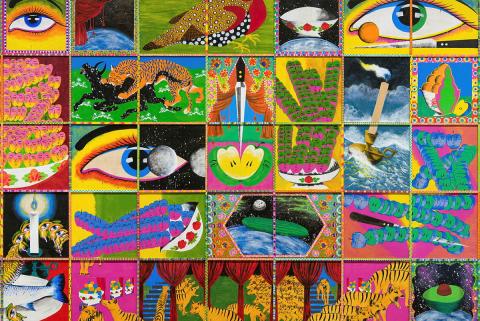Iman Raad
APT9
Born 1979 Mashhad, Iran
Lives and works in New York, United States
Iman Raad works across a variety of media, including painting, drawing, embroidery, graphic work and performance lectures. In these diverse works, he draws on influences such as Persian miniature painting, illuminated manuscripts, folk arts, Islamic architecture and internet image culture. He combines these local references with contemporary subject matter to create his mural-like installations. Using a vivid, high key palette, altered perspective, and repetition that mimics digital glitches, the result is a riot of colour and movement that is both seductive and unsettling. Traditionally ornamental elements such as birds, fruits and flowers are recalibrated into subjects that carry narrative import and are given animate, unnatural presences. These are intertwined with social events and historical moments rendered in fantastical ways to draw in the viewer.
Listen to Iman Raad's favourite tunes on Spotify.

Rathin Barman / India b.1981 / Notes from Lived Spaces 2 2021 / Cast concrete and pigments / Courtesy: the artist and Experimenter Gallery / © Rathin Barman
This large-scale mural by Iman Raad, Days of bliss and woe, is a riot of colour and decoration. It takes inspiration from the heavily ornamented trucks and buses of South Asia — a painting tradition inspired by Mughal art, which developed from Persian miniature painting. The ornate trucks are like mobile galleries and Raad’s mural is intended to be viewed on the move as people make their way through the Gallery. In addition, the giddy repetition of images affords the viewer’s eye quick movement across the surface of the wall.
Ornamentation is central to Raad’s mural. Foliage and animals usually found in the borders of Persian miniature paintings appear as principal figures. The importance of ornamentation is also apparent in the accompanying textiles. These velvet banners are inspired by the flags displayed on buildings and fences in Iran during annual Ashura festivities, when the Shiite population mourns the death of Imam Hussein, the grandson of the prophet Muhammad. Raad works with artisans in the city of Mashhad, who adapt and transform his drawings into highly decorative embroidered banners that celebrate and mourn life and death in all its forms. Raad’s practice is informed by a belief in the central role of vernacular art forms to the wider history of art.

Iman Raad / Iran/United States b.1979 / Days of bliss and woe 2018, installed at GOMA for APT9 / Purchased 2018 with funds from Tim Fairfax AC through the Queensland Art Gallery | Gallery of Modern Art Foundation / Collection: QAGOMA / © Iman Raad / Photograph: N Harth, QAGOMA

Days of bliss and woe 2018
- RAAD, Iman - Creator
